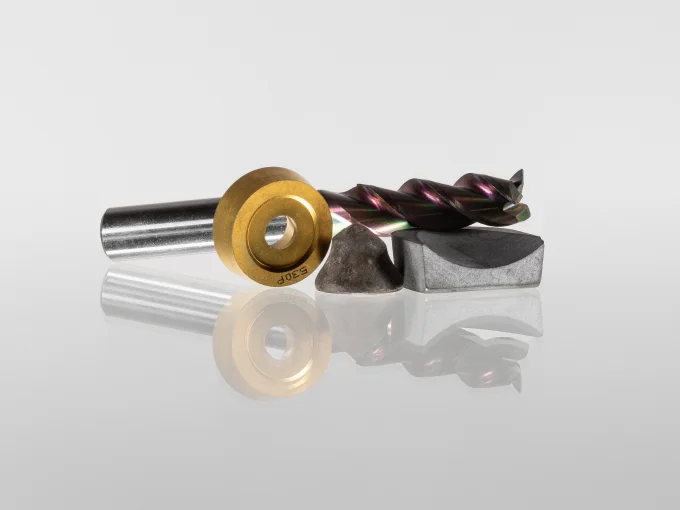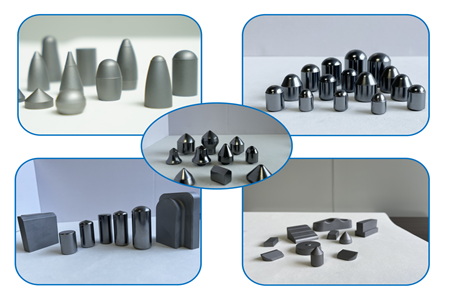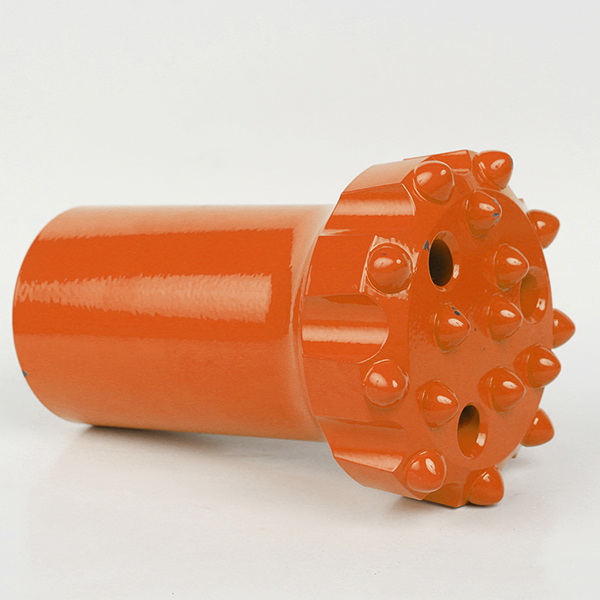Content Menu
● Introduction to Monolithic Tungsten Carbide
>> Historical Context
● Chemical Composition and Structure
>> Chemical Formula and Atomic Structure
>>> Crystal Structure
>>> Bonding Characteristics
● Physical and Mechanical Properties
>> Key Highlights
● Manufacturing Processes
>> Synthesis of Tungsten Carbide Powder
>>> Monolithic Formation
>> Advanced Manufacturing Techniques
● Applications Across Industries
>> Industrial Tooling
>> Mining and Construction
>> Oil and Gas
>> Aerospace and Defense
>> Medical and Electronics
>> Jewelry
● Advantages and Limitations
>> Advantages
>> Limitations
● Monolithic vs. Cemented Tungsten Carbide
● Environmental and Safety Considerations
● Conclusion
● FAQ: Monolithic Tungsten Carbide
>> 1. What is monolithic tungsten carbide?
>> 2. How is monolithic tungsten carbide different from cemented carbide?
>> 3. What are the main applications of monolithic tungsten carbide?
>> 4. How is monolithic tungsten carbide manufactured?
>> 5. Is monolithic tungsten carbide environmentally friendly?
● Citations:
Monolithic tungsten carbide (WC) is a material that has revolutionized modern industry with its extraordinary hardness, durability, and versatility. From the tips of mining drills to the precision of medical instruments, monolithic tungsten carbide's unique properties make it indispensable in countless applications. This comprehensive guide explores the science, manufacturing, uses, and advantages of monolithic tungsten carbide, complete with detailed explanations, diagrams, and answers to the most frequently asked questions.

Introduction to Monolithic Tungsten Carbide
Monolithic tungsten carbide is a solid, single-phase material composed almost entirely of tungsten carbide (WC) without the addition of metallic binders such as cobalt or nickel. The term “monolithic” distinguishes it from cemented carbide, which is a composite material where tungsten carbide grains are held together by a binder. Monolithic tungsten carbide is prized for its purity, uniformity, and exceptional material properties, making it ideal for high-performance and precision applications.
Historical Context
Tungsten carbide was first synthesized in the late 19th century, but its industrial use began in the 1920s when German engineers developed cemented carbide for cutting tools. Monolithic tungsten carbide emerged later as advancements in sintering technology enabled binder-free production. Today, it is a cornerstone of industries requiring extreme durability, such as aerospace, mining, and manufacturing.
Chemical Composition and Structure
Chemical Formula and Atomic Structure
- Chemical Formula: WC (Tungsten Carbide)
- Molar Mass: 195.85 g/mol
Monolithic tungsten carbide consists of a 1:1 atomic ratio of tungsten (W) and carbon (C). The atoms are bonded in a way that gives the material its remarkable hardness and stability.
Crystal Structure
- Hexagonal Structure (α-WC): The most common form at room temperature, with a simple hexagonal lattice of tungsten atoms and carbon atoms filling half the interstices.
- Cubic Structure (β-WC): Forms at higher temperatures, with a rock salt-type lattice. This phase is rarely used industrially due to instability at room temperature.
Bonding Characteristics
- Strong covalent bonds between tungsten and carbon atoms.
- The tungsten-carbon bond length is approximately 220 pm, contributing to the material's exceptional strength.
- Metallic bonding between tungsten atoms adds ductility to the otherwise brittle structure.
Physical and Mechanical Properties
Monolithic tungsten carbide is renowned for its suite of outstanding physical and mechanical properties:
| Property | Value/Description |
| Hardness (Mohs) | 9 – 9.5 (nearly as hard as diamond) |
| Vickers Hardness (HV) | ~2600 HV |
| Density | 15.6–15.7 g/cm³ (twice that of steel) |
| Young's Modulus | 530–700 GPa (3x that of steel) |
| Ultimate Tensile Strength | ~344 MPa |
| Ultimate Compression | ~2.7 GPa |
| Melting Point | 2,870°C |
| Thermal Conductivity | 110 W/(m·K) |
| Coefficient of Expansion | 5.5 μm/m·K |
| Corrosion Resistance | Excellent, except in HF/HNO₃ mixtures |
| Oxidation Resistance | Up to 500–600°C |
Key Highlights
- Hardness: Second only to diamond, making it ideal for cutting and abrasion.
- Density: Provides stability and durability in high-impact applications.
- Thermal Stability: Retains strength and hardness at elevated temperatures.
- Wear Resistance: Outlasts most metals under abrasive conditions.
- Chemical Stability: Resistant to most acids and corrosion, except under specific conditions.
Manufacturing Processes
Synthesis of Tungsten Carbide Powder
1. Direct Reaction: Tungsten metal reacts with carbon at 1,400–2,000°C to form WC powder.
Reaction: W + C → WC
2. Carburization: Tungsten oxide (WO₃) is reduced and carburized with carbon black in a hydrogen atmosphere furnace.
Reaction: WO₃ + 4C → WC + 3CO
Monolithic Formation
Unlike cemented carbide, monolithic tungsten carbide is pressed and sintered without metallic binders. The process involves:
- Powder Preparation: Ultra-fine WC powder (particle size 0.1–2 μm) is produced and purified.
- Compaction: The powder is compacted into the desired shape using high-pressure presses (200–400 MPa).
- Sintering: The compacted “green” body is sintered at high temperatures (1,400–1,600°C) in a vacuum or inert atmosphere, fusing the particles into a dense, solid mass with >99% theoretical density.
Advanced Manufacturing Techniques
- Additive Manufacturing (3D Printing):
Selective Laser Melting (SLM) and Binder Jetting are being explored to create complex geometries, though challenges remain in avoiding cracks during sintering.
- Plasma Spheroidization:
Produces meta-stable WC phases with spherical particles for improved flowability in coatings.
- Spark Plasma Sintering (SPS):
Uses pulsed electric currents to achieve rapid densification at lower temperatures, preserving fine grain structures.
Applications Across Industries
Monolithic tungsten carbide's exceptional properties make it a material of choice in various demanding fields:
Industrial Tooling
- Cutting Tools: End mills, drills, reamers, and inserts for machining steel, titanium, and composites.
- Abrasives: Grinding wheels and sandblasting nozzles.
- Wear Parts: Guides, nozzles, and seals in high-friction environments.
Mining and Construction
- Drill Bits: Tips for rock drills, tunnel boring machines, and oil well drilling.
- Excavation Tools: Chisels, picks, and ploughs for mining and road construction.
Oil and Gas
- Valve Components: Seats and stems for high-pressure valves.
- Downhole Tools: Wear rings and bushings in drilling equipment.
Aerospace and Defense
- Turbine Coatings: Thermal barrier coatings for jet engine components.
- Armor-Piercing Ammunition: Penetrators for military applications.
- Nuclear Reactors: Neutron reflectors and shielding components.
Medical and Electronics
- Surgical Instruments: Scalpel blades, dental burs, and orthopedic saws.
- Semiconductor Manufacturing: Etching nozzles and wafer handlers.
Jewelry
- Wedding Bands: Scratch-resistant rings with a polished metallic luster.
- Luxury Watches: Bezels and cases for premium timepieces.

Advantages and Limitations
Advantages
- Extreme Hardness: Outperforms most metals and ceramics.
- Wear Resistance: Extends tool and component life, reducing maintenance.
- Thermal Stability: Performs reliably at high temperatures.
- Corrosion Resistance: Suitable for harsh environments.
- Precision: Enables high-accuracy manufacturing.
Limitations
- Brittleness: Can fracture under severe impact or shock loading.
- Difficult Machinability: Requires diamond or CBN tools for shaping and finishing.
- Cost: Higher initial cost than steel or traditional alloys, but longer lifespan often offsets this.
- Oxidation at High Temperatures: Begins oxidizing above 500–600°C in air.
Monolithic vs. Cemented Tungsten Carbide
| Feature | Monolithic Tungsten Carbide | Cemented Tungsten Carbide |
| Composition | Pure WC, no binder | WC grains + metallic binder (Co) |
| Hardness | Slightly higher | Slightly lower |
| Toughness | Lower (more brittle) | Higher (less brittle) |
| Wear Resistance | Superior | Excellent |
| Typical Applications | Precision tools, dies | Cutting tools, mining bits |
| Machinability | More difficult | Easier (due to binder) |
| Cost | Higher | Lower |
Environmental and Safety Considerations
- Recyclability: Tungsten carbide scrap is reclaimed through chemical or mechanical processes. For example, zinc melt recycling dissolves cobalt binders from cemented carbide, leaving pure WC for reuse.
- Toxicity: Pure WC is inert, but cobalt-containing cemented carbide dust is classified as a possible carcinogen. Proper ventilation and PPE are essential during machining.
- Carbon Footprint: Sintering consumes significant energy, but lifecycle analyses show that long tool lifespans offset initial emissions.
Conclusion
Monolithic tungsten carbide stands as a testament to the power of materials science. Its unique blend of hardness, wear resistance, and thermal stability has made it a cornerstone of modern industry, from mining and manufacturing to medicine and jewelry. While it presents certain challenges—such as brittleness and cost—its advantages far outweigh its limitations in most high-performance applications. As additive manufacturing and nanotechnology evolve, monolithic tungsten carbide will likely play an even greater role in cutting-edge fields like quantum computing and space exploration.

FAQ: Monolithic Tungsten Carbide
1. What is monolithic tungsten carbide?
Monolithic tungsten carbide is a single-phase, binder-free form of tungsten carbide (WC) that consists almost entirely of tungsten and carbon atoms in a 1:1 ratio. It is known for its exceptional hardness, wear resistance, and thermal stability, making it ideal for precision tools and high-performance applications.
2. How is monolithic tungsten carbide different from cemented carbide?
Monolithic tungsten carbide contains no metallic binders, whereas cemented carbide is a composite material where tungsten carbide grains are bonded together with a metal such as cobalt. Monolithic WC is harder and more wear-resistant but also more brittle than cemented carbide, which offers greater toughness.
3. What are the main applications of monolithic tungsten carbide?
Monolithic tungsten carbide is used in precision cutting tools, wear-resistant machine components, mining drill bits, oil and gas equipment, aerospace parts, medical instruments, and jewelry due to its superior hardness and durability.
4. How is monolithic tungsten carbide manufactured?
It is produced by pressing ultra-fine tungsten carbide powder into a desired shape and then sintering it at high temperatures in a vacuum or inert atmosphere, without adding metallic binders. This results in a dense, solid material with uniform properties.
5. Is monolithic tungsten carbide environmentally friendly?
Tungsten carbide is recyclable, and scrap material can be reclaimed and reused. While its production is energy-intensive, recycling helps reduce environmental impact. Proper handling of powders and dust is necessary to ensure safety.
Citations:
[1] https://en.wikipedia.org/wiki/Tungsten_carbide
[2] https://www.retopz.com/57-frequently-asked-questions-faqs-about-tungsten-carbide/
[3] https://shop.machinemfg.com/the-pros-and-cons-of-tungsten-carbide-a-comprehensive-guide/
[4] https://shop.machinemfg.com/tungsten-carbide-an-overview/
[5] https://scienceinfo.com/tungsten-carbide-properties-applications/
[6] https://sifisheriessciences.com/journal/index.php/journal/article/download/407/390/777
[7] https://sifisheriessciences.com/journal/index.php/journal/article/view/407/390
[8] https://www.sciencedirect.com/science/article/abs/pii/S0955221918301201
[9] https://www.sciencedirect.com/science/article/abs/pii/S0022311519306014
[10] https://guhengqiang.en.made-in-china.com/product/HADrOTvYsgVE/China-Customized-Monolithic-Tungsten-Carbide-Saw-Blade-for-Cutting-Tool.html
[11] https://medicarri.com/product/fg-tungsten-carbide-surgical-bur-monolithic-500316408297016-us-no-162-eibxg
[12] https://patents.google.com/patent/US5372978A/en
[13] https://pubs.aip.org/aip/jap/article/96/7/3727/930396/Lateral-stress-measurements-and-shear-strength-in
[14] https://www.lmmgroupcn.com/characteristics-and-application-of-tungsten-carbide/
[15] https://www.vedantu.com/chemistry/tungsten-carbide
[16] https://www.tungstenworld.com/pages/tungsten-news-common-questions-about-tungsten
[17] https://ivodent.hu/__docs/975_c9c103f498cce643cd9184179c56693a.pdf
[18] https://www.yatechmaterials.com/en/cemented-carbide-industry/answers-to-questions-about-the-use-of-tungsten-carbide-edm-blocks/
[19] https://www.titanjewellery.co.uk/Mens/Tungsten-FAQ.html
[20] http://www.carbidetechnologies.com/faqs/
[21] https://cdn.plansee-group.com/is/content/planseemedia/ceratizit/downloads/pdf/hard-material-solutions-image-brochure/2022/03/EN.pdf
[22] https://www.thermalspray.com/questions-tungsten-carbide/
[23] https://carbideprocessors.com/content/nl-jun-11.pdf
[24] https://www.carbide-part.com/blog/common-problems-and-causes-in-tungsten-carbide-pressing/
[25] https://www.sciencedirect.com/science/article/abs/pii/S1359645409002821
[26] https://www.sciencedirect.com/science/article/pii/S1359645423005578
[27] https://www.tungco.com/insights/blog/frequently-asked-questions-used-tungsten-carbide-inserts/
















